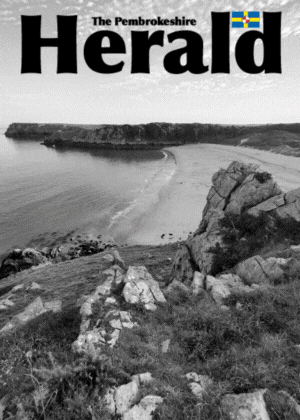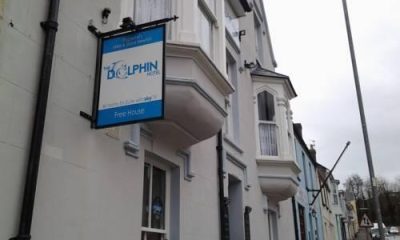Community
Tenby: The remarkable life of WW2 teleprinter operator who helped win the war

A 99-YEAR-OLD care home resident who regularly saw Winston Churchill during her top secret work at an intelligence base in the Second World War has revealed her unique role in history for the first time.
Grandmother-of-six Dorothea ‘Lilian’ Raymant, who lives at Woodland Lodge Care Home in Gumfreston, Tenby, was recruited as a teleprinter operator with the Women’s Auxiliary Air Force (WAAF) in 1940.
She spent four years sending encoded messages from the secret allied intelligence base at RAF Medmenham at Danesfield House in Buckinghamshire.
Alongside Bletchley Park, RAF Medmenham played a pivotal role in the war effort, housing a pioneering team of scientists, academics and inventors who together developed the then relatively new science of interpreting aerial photographs.
The information gleaned from the photographs, taken by courageous reconnaissance pilots across occupied Europe, was passed on in code to strategic departments and bases by specially-trained teleprinter operators.
Details of Lilian’s remarkable life are being revealed for the first time as part of this summer’s commemoration of the 75th anniversary of the D-Day Landings and the Battle of Normandy.
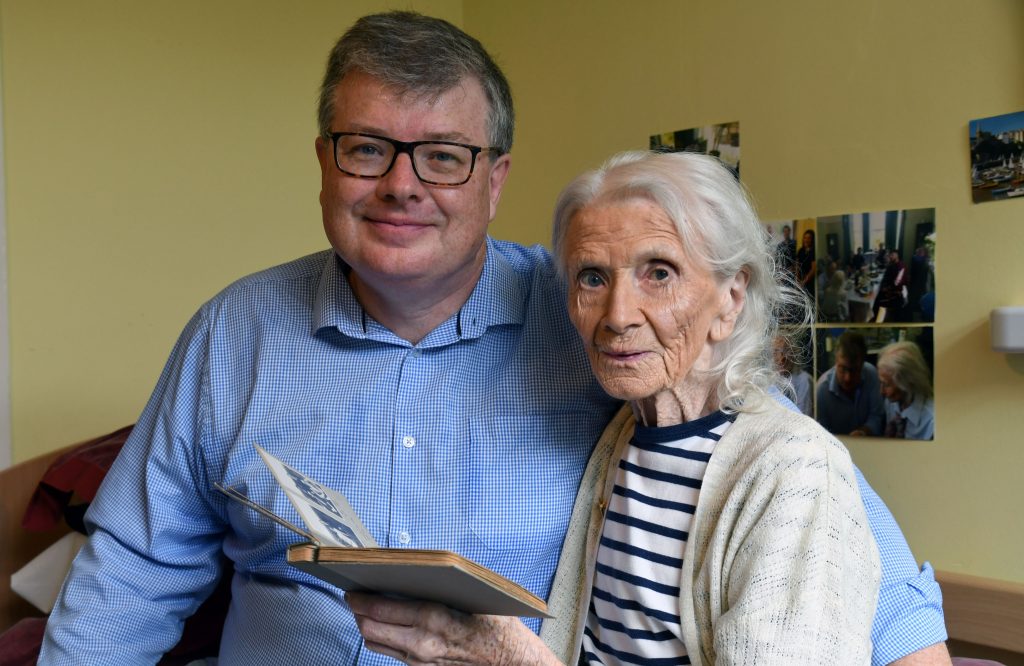
Former teleprinter operator Dorothea ‘Lilian’ Raymant with grandson Andrew
“I was a just a small cog in a big team and everyone did their bit,” said Lilian, who has released some personal photographs for usmarking her extraordinary life.
“We were targeting a common enemy. There were so many officers based there that the WAAFs were told not to bother saluting or they would have their hand permanently glued to their heads. It felt very democratic with so many people of rank in the one place.
“At the time, we didn’t realise the impact of what we were doing. Everything was managed in great secrecy. We certainly didn’t know the scale of D-Day.”
Her special role in history has now been praised by Mario Kreft MBE, the Chair of care industry champions Care Forum Wales.
“The work of Lilian and the wider team at RAF Medmenham is extraordinary and helped bring an end to the war. We all have so much to be grateful for,” he said
“I am delighted her special role in history can be finally revealed as the nation marks this important anniversary.”
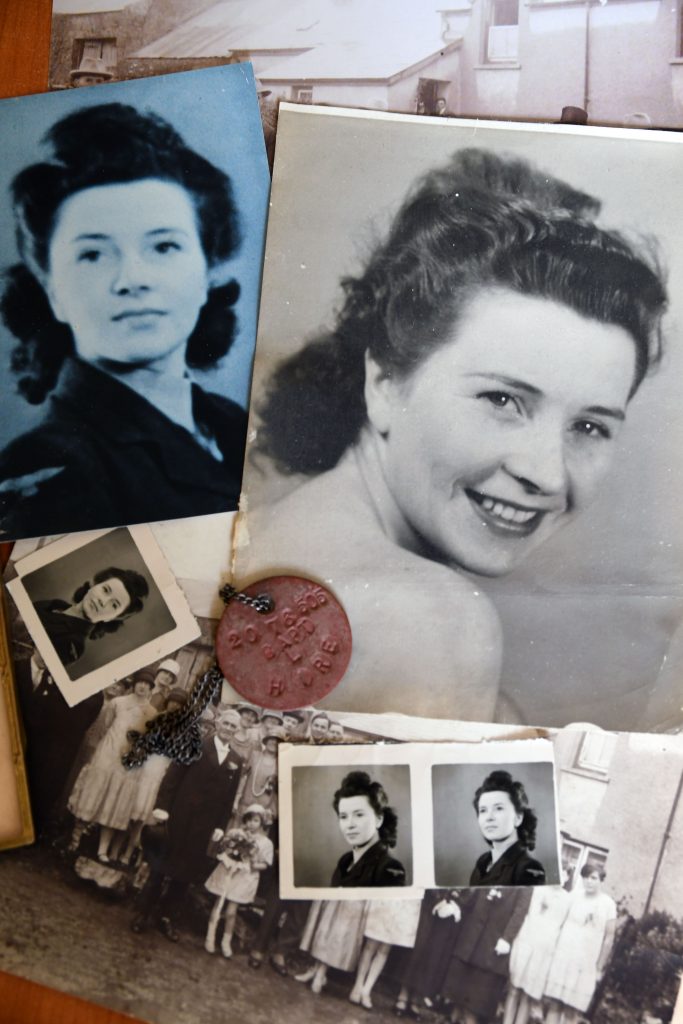
Born in 1920 in Pembroke Dock, Lilian was the youngest of seven children and the daughter of Owen Hire, a well-respected former Mayor of Pembroke and Pembroke Dock. Her uncle John Hire was the captain of a large sailing ship who saved the crew of a Norwegian vessel in a storm and was later rewarded for his heroics by the King of Sweden and Norway, while her grandfather William Jones was a decorated war hero who fought in the Crimean War.
She spent her early childhood growing up on the family farm before taking on clerical work in Pembroke Dockyard. Later, she joined the WAAF to train as a teleprinter operator.
The work carried out at RAF Medmenham is considered as significant as that of Bletchley Park.
It is estimated that 80 per cent of all intelligence in the war originated from aerial photography and the team, which regularly welcomed Prime Minister Winston Churchill and Britain’s highest-ranking army officer, General Alan Brooke, Chief of the Imperial General Staff, was at one stage producing up to seven million prints a month and was the centre for photographic reconnaissance and preparations for D-Day.
Among many triumphs, the centre led the identification by Lady Babington Smith, who Lilian knew at the time, of the V1 ‘Doodlebug’ launch site at Peenemunde and the discovery of Hitler’s V-weapons rocket programme.
“Although no one knew initially what they were, we were later told that the rocket launch sites were quickly highlighted as a target by the aerial photographic reconnaissance team because it was evident the Germans had gone to a lot of effort in their construction,” explained Lilian.
The team also studied enemy movement of ships and trains, factories, shipyards and advised targets to the Allied bombers as well as assessed damage and whether sites needed to be bombed again.
RAF Medmenham was involved in almost every operation in the war, producing aerial photographs that were translated into models of the channel coast and providing detailed information on beach gradients, tide levels, currents, typical waves and beach exits in the case of D-Day.
In addition it advised the locations of the Atlantic Wall German gun emplacements, pill boxes, wire entanglements, trench systems and every radar installation to a distance of 20 miles inland was noted.
Lilian was stationed alongside Churchill’s daughter, Sarah, a photographic interpreter, and has fond memories chattering with her on the beds in their barracks.
“Sarah would be clattering about in wooden clogs to protect her feet against the corrosive photographic developing chemicals,” remembered Lilian, who met Churchill’s daughter again many years later at a public event.
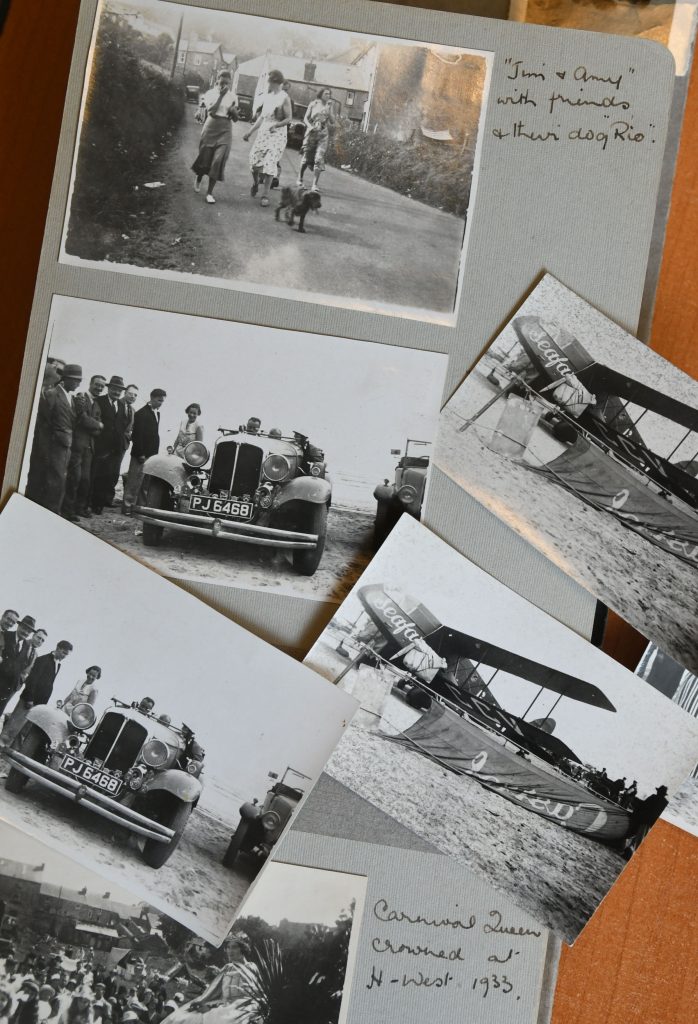
“You’d often see the Prime Minister arriving in his car although I never spoke to him.”
Lilian and the other girls would sometimes shin down the drainpipes at night to go off to the dances.
“It was all good clean fun” says Lilian, although after one such foray she was chased by the police for not having lights on her bicycle, and was put on ‘Jankers’ as punishment.
Sometimes they would dance with the American Airborne troops based at nearby White Waltham.
Her son, Andrew, who lives in Norfolk, a management consultant for logistics and supply chains, said: “I always thought as a young man my father had the more interesting war as he completed two tours of duty, one of the Eastern Mediterranean targeting Italian and German convoys and one as part of the Coastal Command at Pembroke Dock. But as more information came out about Bletchley and people talked about RAF Medmenham it became clear mum had been at the centre of some very interesting history indeed.
“Mum never really talked about it growing up. She had also signed the Official Secrets Act. She always felt the real heroes were the ones on the battle field who never came back.
“It was a time of great trauma for them. They didn’t really have a clear picture of what was going on but sometimes the results of the bombings would be fed through.
“When the aerial photos came back from D-Day, they saw lots of little black dots in the water which of course were the bodies of those who didn’t come back from the beaches.
“It would’ve been very difficult to see it as just an administrative job although it is only later on that they would’ve understood the reality of what had happened.”
Later in the war, in 1945, Lilian was posted back to Pembroke Dock and the RAF Coastal Command Station in the dockyard. During WW2, Pembroke Dock became the world’s largest flying boat station and it was here Lilian met her future husband, Frank ‘Ray’ Raymant, who was taking part in Sunderland Flying Boat search and destroy missions against the U Boat threat, both during the battle of the Atlantic and the build up to D-Day.
The couple went on to have three sons, Michael, 60, and Andrew, 56, and David, who sadly died in his teens, but not until Lilian had established a successful career in civilian communications.
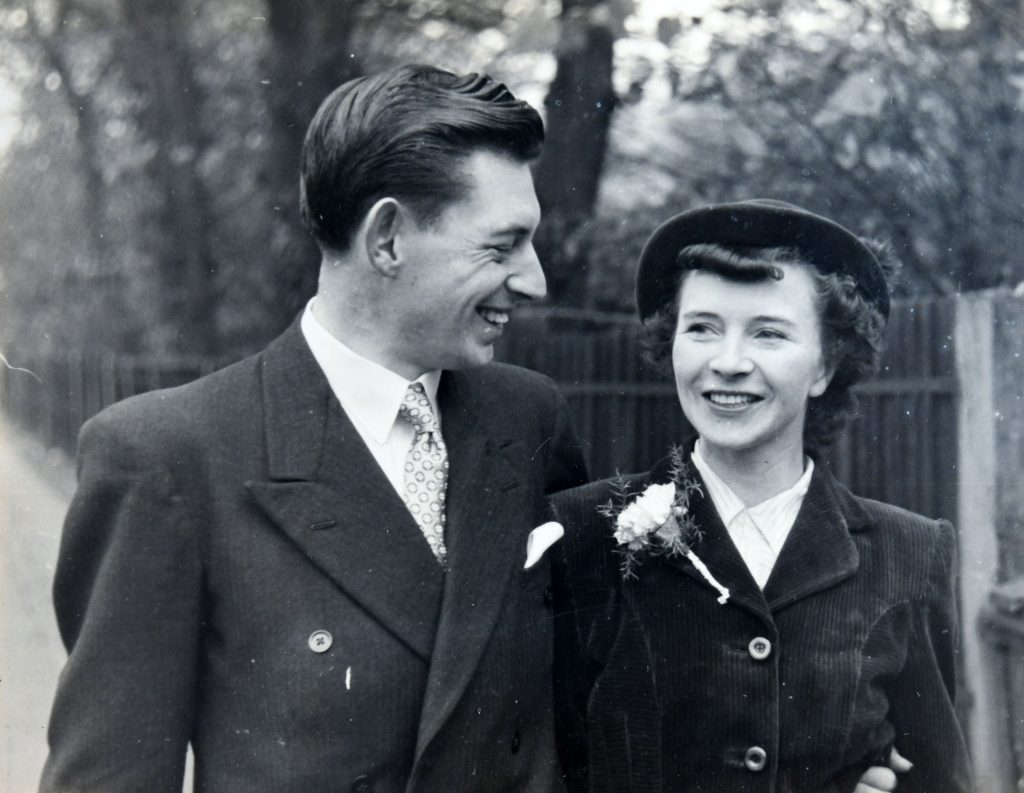
Wedding photo with husband Ray
After the war, highly-trained Lilian was recruited by Dutch airline KLM and later food exporters AJ Mills & Sons.
“The whole family is very proud of mum and for who she is,” said Michael, who is head of Welsh Language Service for North Wales Police.
“She was around during a remarkable part of history. The grandchildren, Hefin, Branwen, Siwan, Meirion, Brychan and Heledd, are very proud of all her achievements then and also for what came afterwards.”
Olivia Etheridge, deputy manager of Woodland Lodge Care Home, described Lilian as a charming and “marvelously knowledgeable” lady.
“We all love to hear her stories about her life, from make-overs in Bond Street to befriending Winston Churchill’s daughter,” she added.
“Lilian is a kind, polite and glamourous lady who deserves recognition for all of the fantastic things she has done in the 99 years of her life.”
Community
Crowds line streets as tractor run hailed a festive success

CROWDS lined streets and pavements across Pembrokeshire on Saturday evening (Dec 20) as Clarbeston Road AFC’s illuminated Christmas tractor run was hailed a resounding success.
More than 200 tractors took part in the event, travelling through villages and towns including Newmoat, Maenclochog, Llys-y-frân, Walton East, Clarbeston Road, Wiston, Newbridge, Poyston Cross, Crundale and Haverfordwest, where large crowds gathered to watch the festive convoy pass through.
Families, children and residents wrapped up against the cold to enjoy the sight of tractors decorated with Christmas lights and festive displays, with applause and waves greeting drivers as they made their way through built-up areas and rural roads alike.
The convoy set off from the Clarbeston Road AFC Knock Playing Fields at 5:30pm and concluded at the County Showground in Haverfordwest later in the evening. At the end of the run, refreshments were available and the raffle draw took place at the Park House building, which was open to the public.
Organisers said the turnout from both drivers and spectators exceeded expectations, with the event once again bringing communities together while raising funds for local causes, including The Catrin Vaughan Foundation, In It With Isaac, and Wales Air Ambulance.
Clarbeston Road AFC thanked tractor drivers, volunteers, sponsors and members of the public for their support, as well as residents and road users for their patience while the convoy passed through.
The illuminated tractor run has become a firm fixture in the local festive calendar, with Friday night’s event described by many spectators as one of the best yet.

Community
Charity tractor and car run set to raise funds for Macmillan and Paul Sartori
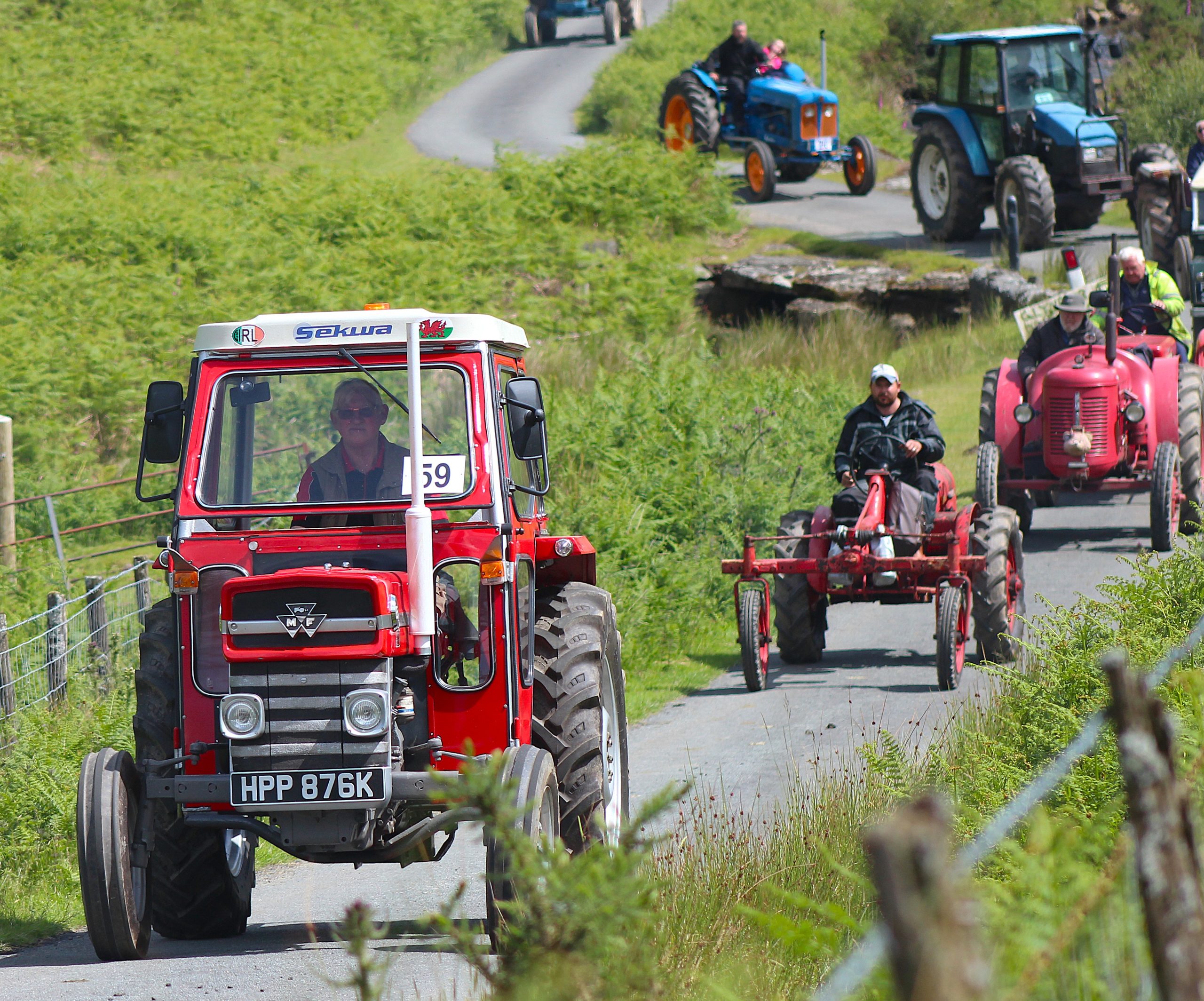
A CHARITY tractor and car run in memory of Charles Rees is set to take place in Pembrokeshire later this month, with funds raised supporting Macmillan Cancer Support and Paul Sartori Hospice at Home.
The Charles Rees Tractor & Car Run will be held on Sunday, December 28, 2025, starting and finishing at Dudwell Farm in Camrose.
Participants are being invited to “start their engines” in aid of the two charities, with gates opening at 9:00am and the convoy leaving promptly at 10:30am. Organisers have confirmed that the run will operate with no halfway stops, returning to Dudwell Farm at the end of the route.
The event will begin and finish at Dudwell Farm, Camrose (SA62 6HJ), and is open to tractors and cars. Registration and cash payment will take place on the day, with the price to be confirmed nearer the event.
Additional donations can also be made locally in the run-up to the event at Camrose Country Hardware and Croesgoch Stores.
The run has been organised to raise money for Macmillan Cancer Support, which provides vital care and assistance to people living with cancer, and Paul Sartori Hospice at Home, which supports patients and families across Pembrokeshire during some of the most difficult times of their lives.
Organisers say more information will be released closer to the event and are encouraging the local community to support the run, whether by taking part, donating, or lining the route to show support.
The event is expected to attract strong local interest, continuing Pembrokeshire’s tradition of community-led fundraising in support of much-valued charities.
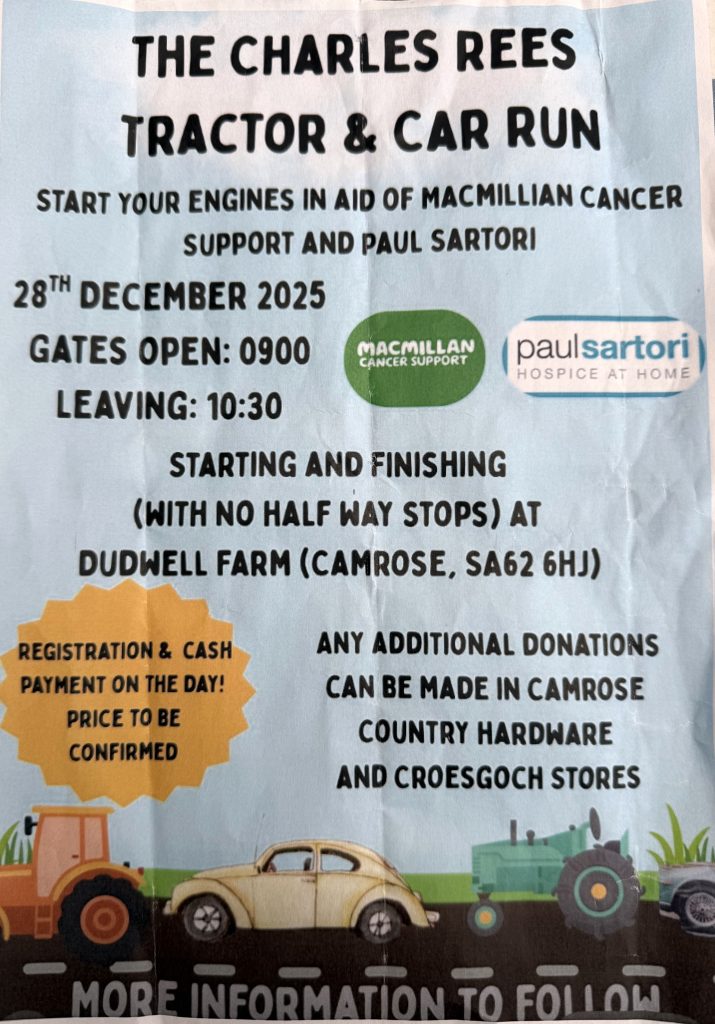
Community
Cilgerran school could be discontinued as consultation launched

A CONSULTATION on proposed changes for a north Pembrokeshire school, which attracted a near-400-strong petition in opposition to the council, has been launched.
At its May meeting, Pembrokeshire County Council considered a report of the School Modernisation Working Group which outlined the findings of a review of education provision in the Preseli area.
“In particular, the review considered the extent of surplus school places in the area, set against a significant decline in the pupil population,” the council in its consultation on proposals for discontinuation of Cilgerran Church in Wales Voluntary Controlled School has said.
A later July meeting of the council, following May’s agreed consultation with St David’s Diocese, backed a general consultation to discontinue Cilgerran Church in Wales Voluntary Controlled School, and to establish it as a 3-11 community school.
The consultation was launched on December 16 and runs to January 30.
Hundreds have opposed the proposed changes, with a petition, on the council’s own website opposing the changes recently closed after gaining 391 signatures.
Any petition of between 100 and 499 signatures triggers a debate at one of the council’s Overview and Scrutiny Committees, and any over 500 a debate at full council, meaning this petition will be heard by committee members at a later date.
The proposals for Cilgerran are part of a wide range of potential education changes in the county.
Two petitions, opposing the potential closures of Manorbier and Ysgol Clydau schools, were recently heard at full council and a further petition opposing the potential closure of Stepaside School has recently been launched.
The Cilgerran e-petition, created by Louise Williams, raised concerns including the school could become part of a federation, a loss of permanent head teacher on site, a shared head teacher would have to oversee several schools, loss of funding control and the ability to maintain the school’s current healthy and stable funding, and a loss of commitment to the church, in turn could impact on the school’s and pupils values, beliefs and cultural beliefs.
It said: “Ysgol Cilgerran VC school has strong links with the Church community in Cilgerran and we believe this will have a negative impact on the children who attend the school, the community of Cilgerran and the links between the two.
“We are proud of our school ethos and values which are strengthened by our links with the church. The school has close and strong relationships with our Church in Wales federation governors one of which is also our safeguarding governor.
“Our Church Federation governors work closely with the school and are regular visitors to the school and the children. They provide vital support and guidance to the school and have a positive impact on the Children’s education. We believe these links will be weakened by this proposal to remove our VC status and we believe this is an un-necessary action.”
-

 Crime4 days ago
Crime4 days agoMilford Haven man jailed after drunken attack on partner and police officers
-

 News7 days ago
News7 days agoDyfed-Powys Police launch major investigation after triple fatal crash
-

 Crime4 days ago
Crime4 days agoTeenager charged following rape allegation at Saundersfoot nightclub
-
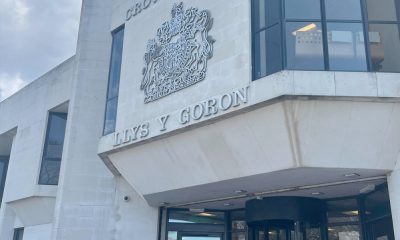
 Crime5 days ago
Crime5 days agoMan charged with months of coercive control and assaults
-

 Crime5 days ago
Crime5 days agoMan sent to Crown Court over historic indecent assault allegations
-

 Crime5 days ago
Crime5 days agoMilford Haven man admits multiple offences after A477 incident
-

 Crime7 days ago
Crime7 days agoTrefin dog case ends in forfeiture order after protection notice breach
-

 Crime5 days ago
Crime5 days agoWoman ‘terrified in own home’ after ex breaches court order


















